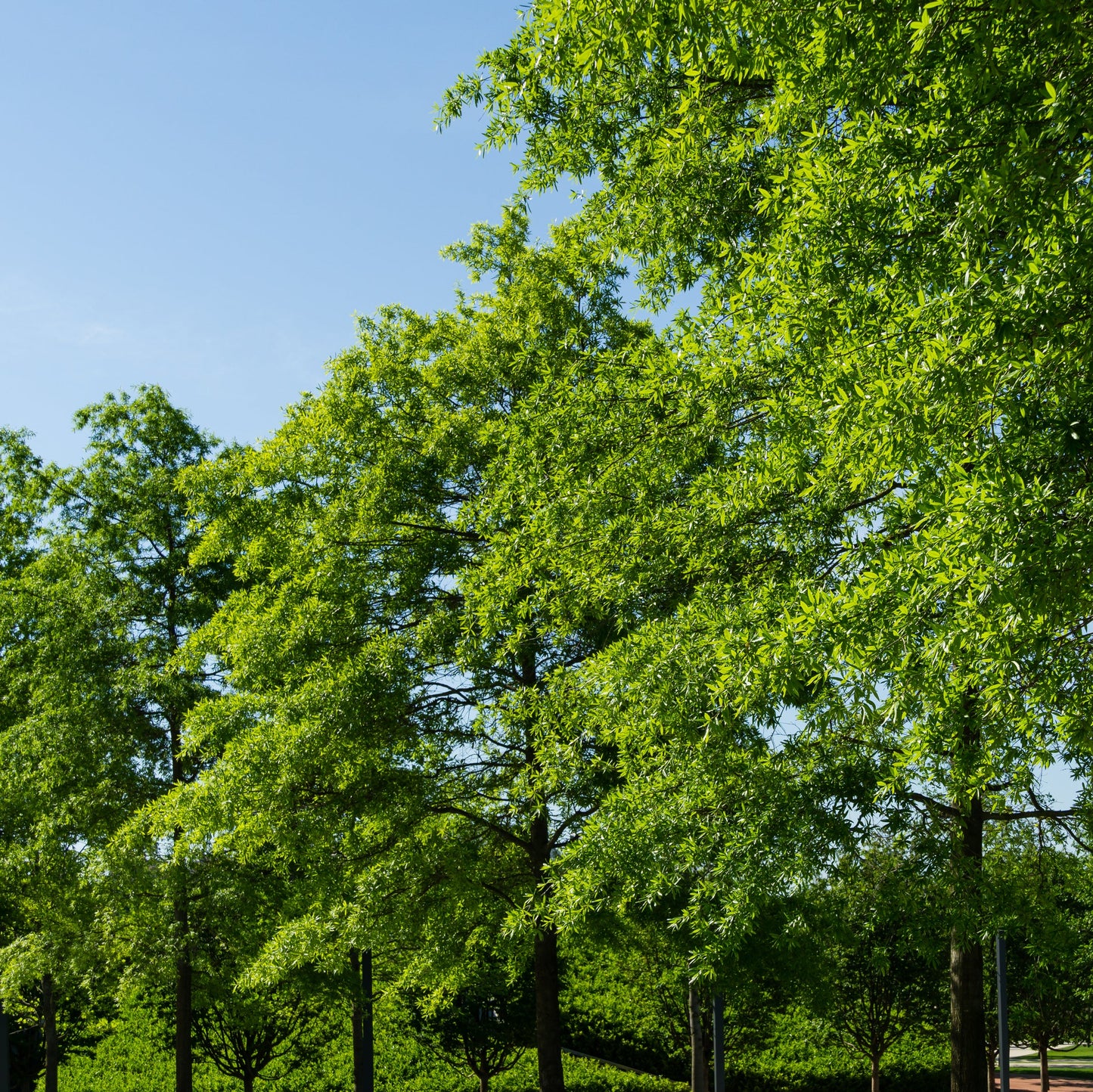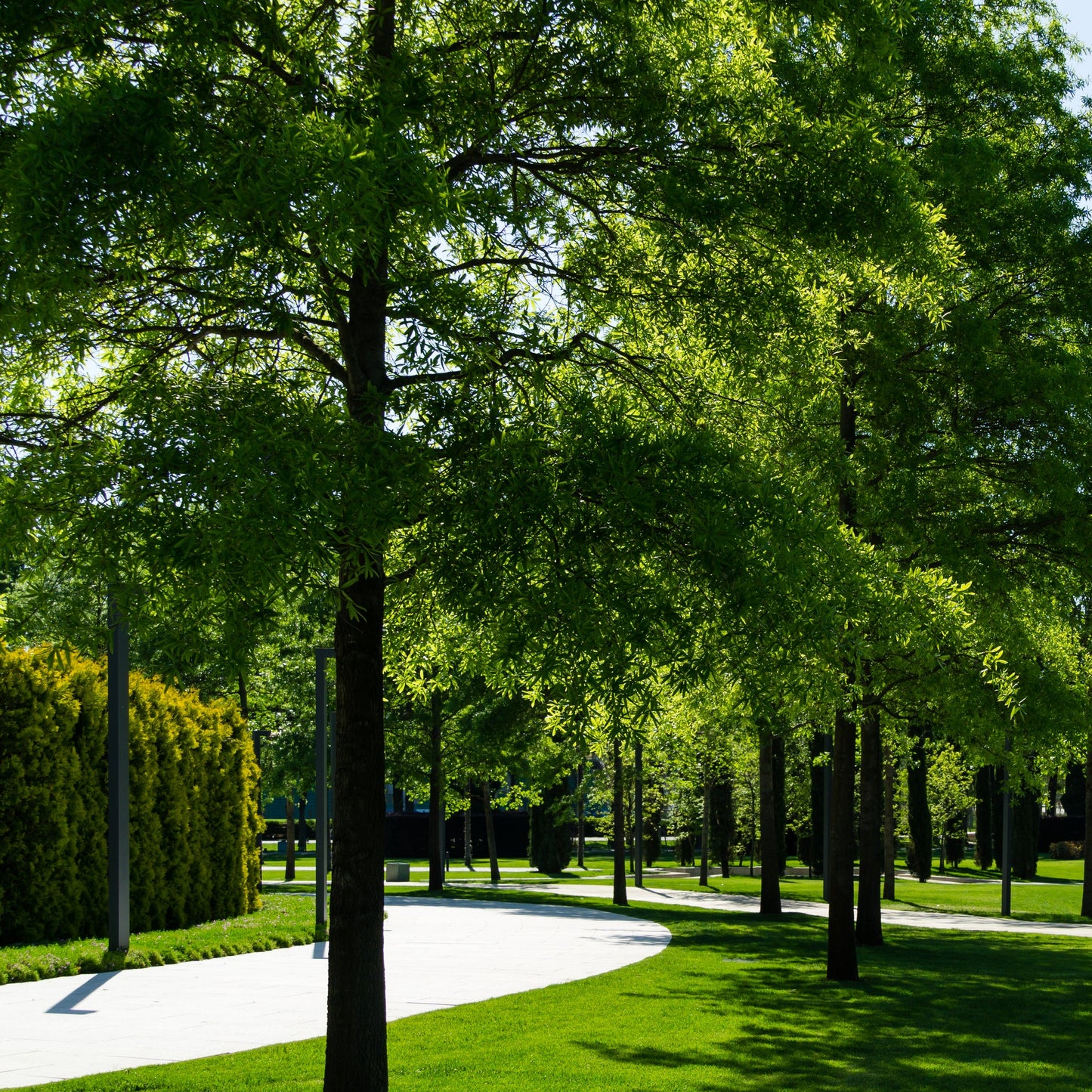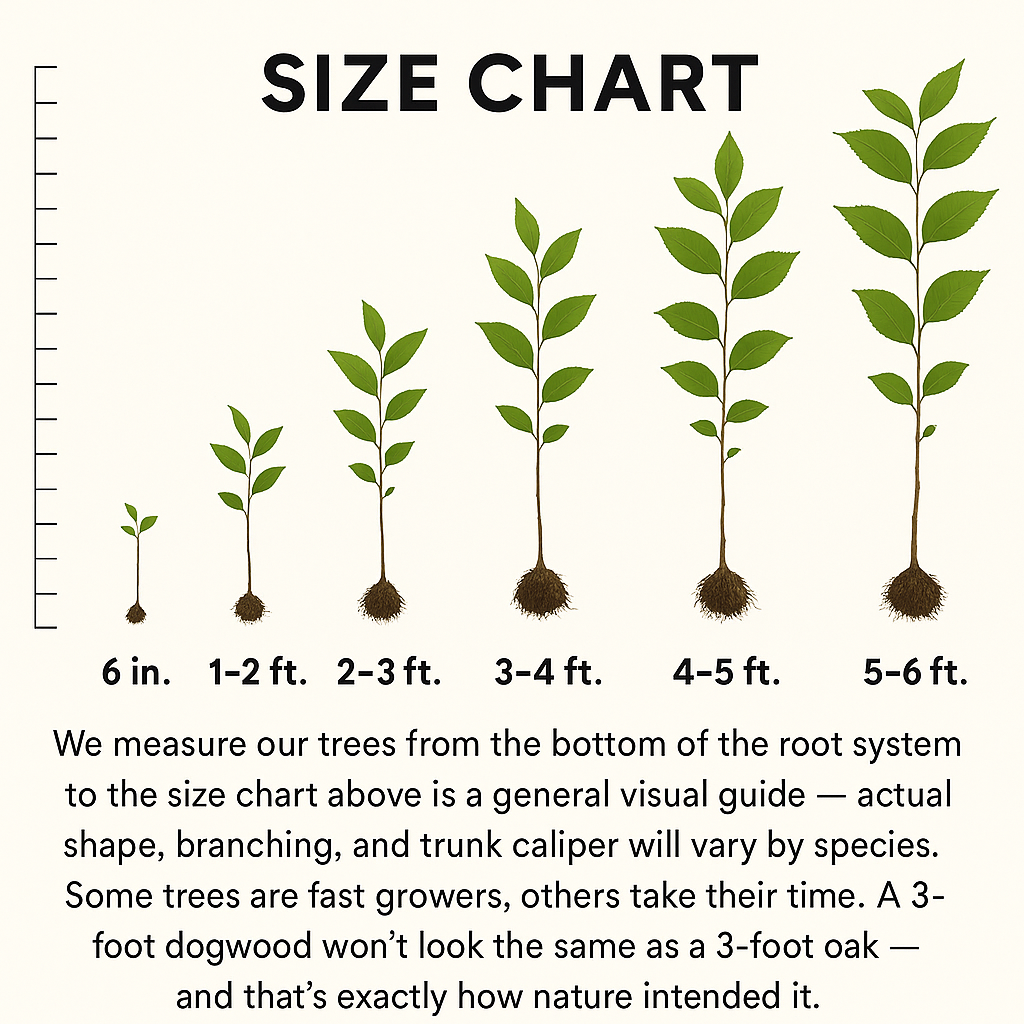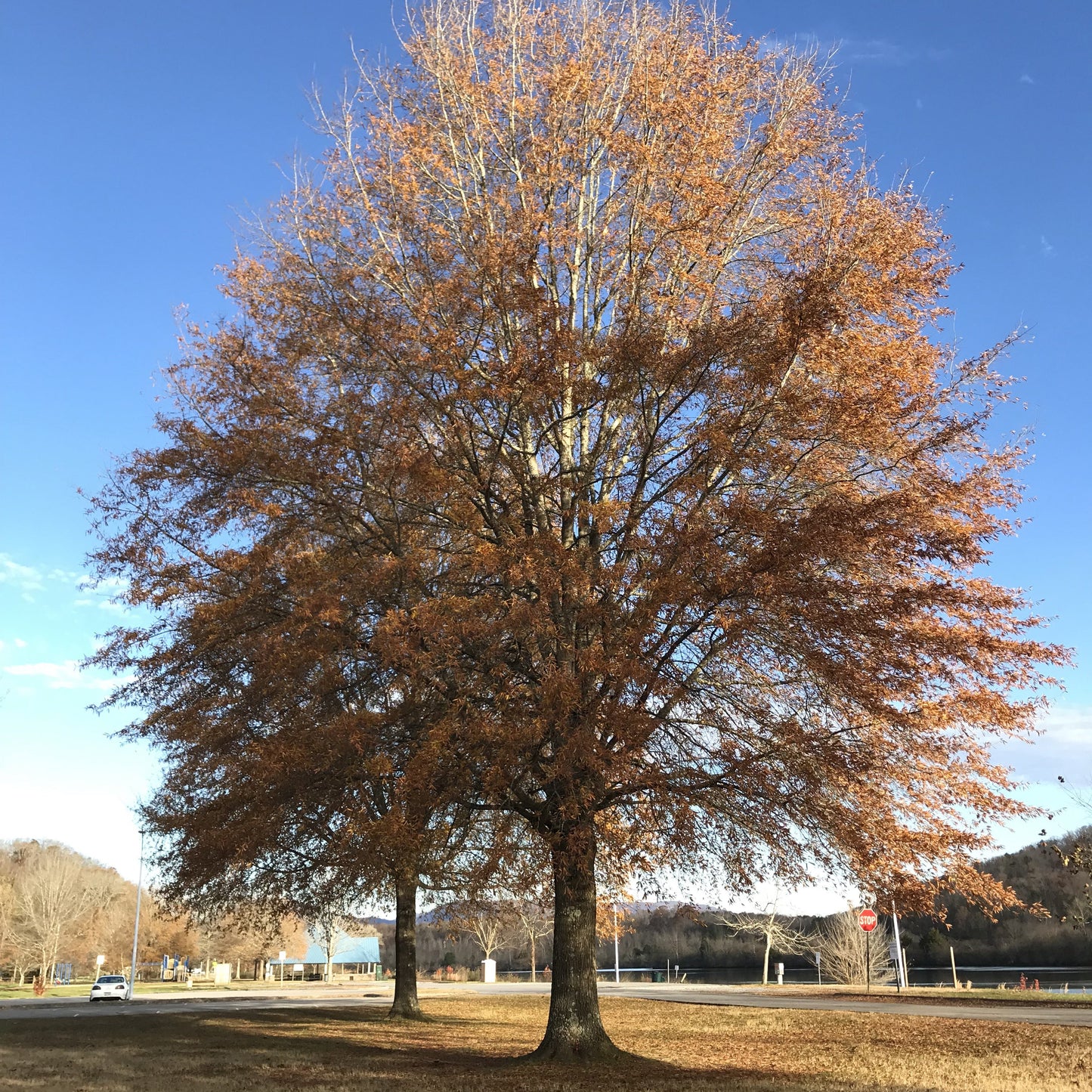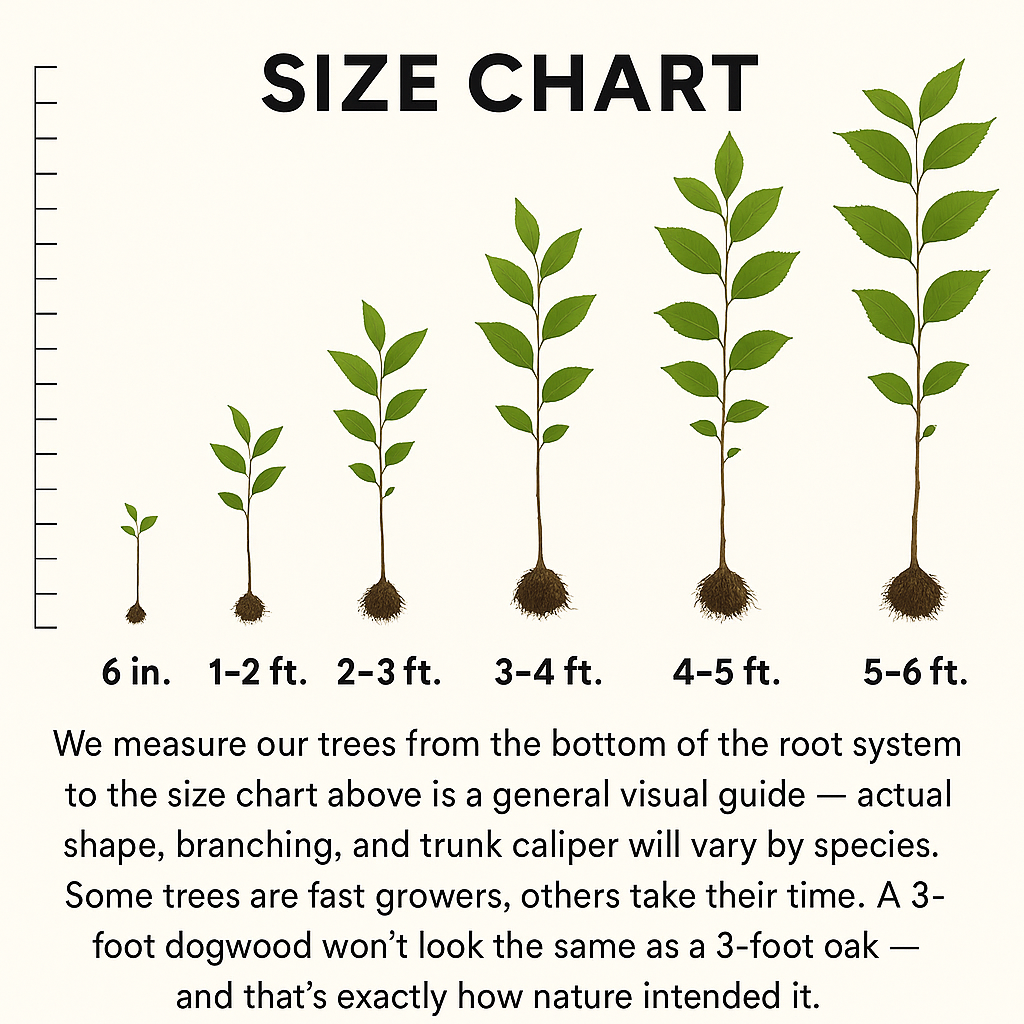Limited Quantities - Reserve Now For Fall
Willow Oak Tree
Willow Oak Tree
Couldn't load pickup availability
Quercus phellos
Willow Oak Tree
The Willow Oak Tree is a fast-growing, long-lived oak known for its slender, willow-like leaves and graceful, rounded form. A favorite in urban settings and large landscapes, this native oak brings refined texture, bold fall color, and powerful ecological value.
Whether lining streets, shading backyards, or anchoring native plantings, the Willow Oak offers beauty, endurance, and support for countless species.
Willow Oak Tree Overview
| Attribute | Details |
|---|---|
| 🌿 Botanical Name | Quercus phellos |
| 🏷️ Common Names | Willow Oak, Pin Oak (regional misnomer) |
| 🌳 Mature Height | 40–80 feet |
| 🌐 Mature Width | 30–50 feet |
| 📈 Growth Rate | Fast (24+ inches per year) |
| ⏳ Lifespan | 100–200+ years |
| 🧊 USDA Zones | 5–9 |
| ❄️ Chill Hours | 400–600 hours |
| ☀️ Sun Preference | Full sun |
| 🧱 Soil Type | Prefers moist, well-drained loam; tolerates clay and poor soils |
| ⚖️ Soil pH | Acidic to slightly alkaline (5.0–7.5) |
| 💧 Water Needs | Moderate; tolerates wet conditions once established |
| 🌸 Flower Color | Inconspicuous yellow-green catkins in spring |
| 🍒 Fruit Type | Small, rounded acorns (1/2 inch) |
| 🐝 Pollinators | Wind-pollinated; supports caterpillars and beneficial insects |
| 🌿 Growth Habit | Broadly rounded canopy with upright central leader |
| ↔️ Spacing | 35–50 ft apart for shade or specimen planting |
| 🏡 Landscape Uses | Shade tree, street tree, native reforestation |
| 🧹 Maintenance Level | Low once established |
Environmental Benefits
🌳 Provides dense canopy cover for cooling and stormwater reduction
🐛 Supports hundreds of native moth and butterfly species
🐿️ Acorns feed deer, squirrels, birds, and other wildlife
🌱 Enhances soil health and long-term ecosystem resilience
Pros & Cons
| ✅ Pros | ⚠️ Cons |
|---|---|
| 🌿 Elegant willow-like foliage with golden fall color | 🍂 Drops leaves and acorns in fall (may require cleanup) |
| 🌳 Fast-growing and long-lived native tree | 🌳 Grows very large — not ideal for small lots |
| 🐛 Major ecological support for wildlife and pollinators | 🐜 May attract caterpillars and occasional pests |
| 🧱 Tolerates compacted soils and urban stressors | 💧 Needs regular water during establishment phase |
| 🌞 Thrives in sun with low maintenance needs | ✂️ Prune young to establish strong structure |
Planting & Care Guide
🛁 Soak root zone thoroughly before and after planting
🕳️ Dig a wide hole, keeping root flare slightly above soil level
🌾 Mulch 2–3 inches deep, keeping away from trunk
💦 Water deeply and regularly for first 1–2 years
✂️ Train central leader and prune lower branches as needed
🧪 Fertilize only if soil is poor; compost is usually sufficient
The Willow Oak Tree is a bold, beautiful native that combines fast growth with unmatched ecological value. Its fine-textured foliage, classic shape, and urban adaptability make it an ideal shade tree for parks, boulevards, and open landscapes — all while feeding wildlife and supporting the health of our planet.
Share
